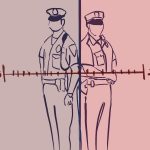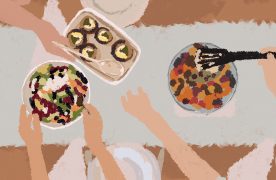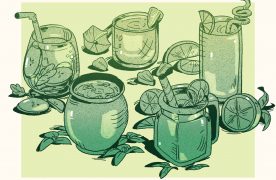It seems straight white men have taken over the LGBT realm too. In the past five years, they made up 40 percent of LGBT magazine covers (Out, The Advocate and Attitude), while white LGBT people made up 35 percent, LGBT people of color made up 9 percent and transgender or nonbinary people made up 2 percent, according to a study conducted by Fusion.
The hashtag #GayMediaSoWhite gained traction online this week after queer songwriter Jesse Saint John tweeted, “‘Gay media’ needs to reevaluate their content when the major corporations’ ad campaigns they’re covering are more progressive than them.”
Following this, Mykki Blanco, a queer rapper, tweeted, “I wonder everyday if ‘Gay Media’ in 2016 are at all embarrassed when you go to their websites/content and it’s only shirtless white guys,” she tweeted. “I think I will probably be dead before White Gay Media ever becomes inclusive, I think none of us living now will ever see it LMAO.”
Blanco spoke to Fusion Monday in response to the issue.
“This unchecked level of privilege and white supremacy literally destroys people,” Blanco said. “I’ve seen people of color suffer from self-esteem issues because they’re not the right color or they’re not the right size … This [is] really hurtful, toxic s—.”
It’s easy to get caught up in congratulating allies for being decent human beings, but the fact is, these LGBT publications should be showcasing LGBT people. And a diverse set of LGBT people, at that.
In the wake of marriage equality, the LGBT movement has become predominantly white and predominantly male. White gay men are more palpable to middle America than transgender women color, 41 percent of whom have attempted suicide, according to Mother Jones.
Putting a heterosexual man on the cover of an LGBT publication is like putting Ozzy Osbourne on the cover of Better Homes and Gardens. They may have interesting opinions on the subject, but they just don’t belong.
And hashtags do bring progress, but as Blanco said, their impact will only be felt as long as they are trending. And since the criticism is targeted toward a very specific community, #GayMediaSoWhite’s impact won’t nearly be as big as #OscarsSoWhite.
There’s no doubt allies are valuable. But less time should be spent congratulating allies and more should be spent showcasing diversity within the LGBT community. Allies can have their place in an LGBT magazine, but it’s definitely not on the cover.
When people who aren’t part of a marginalized group try to lead movements, they often end up talking over the people who need to be heard the most. And that’s exactly what’s happening with LGBT media.
When almost half of LGBT magazine covers feature straight white men, something needs to change. Straight white men have even permeated LGBT spaces.
These LGBT publications are read by the queer community and largely go unnoticed by mainstream America. These publications are not for straight men, so straight men should not be on the magazine covers. Queer people of color don’t need to see another set of white abs on a magazine cover. They need to see someone they can relate to.
There’s also an unspoken problem of racism and sexism within the gay community. Grindr and Tinder bios sometimes specify “no blacks,” “no Asians,” “no Latinos” and “no femmes,” or effeminate gay men. Queer people need to know that they’re not anomalies, and that the world recognizes them as valuable human beings.
If LGBT publications won’t embrace queer people of color, then no other medium will. A community that’s been discriminated against for so long should know better than to exclude an entire group of people. Ignoring minorities may not be intentional, but that’s all the more reason to bring attention to them. They need to dismantle this institutionalized racism one cover at a time.
A hashtag isn’t going to solve the world, but it’s a good start. The intersection of race and sexuality is a conversation rarely brought up in mainstream media, so any visibility is appreciated. Queer people of color need to be reminded that they’re great in this world that repeatedly tells them they’re not. LGBT publications shouldn’t feature allies when they could instead feature the true heroes.














